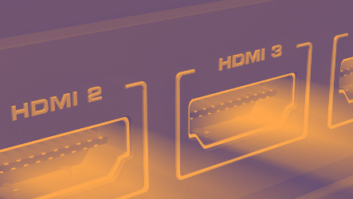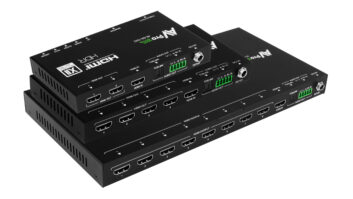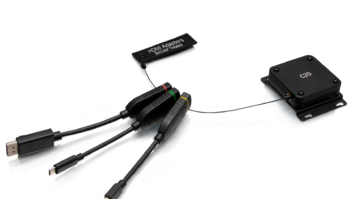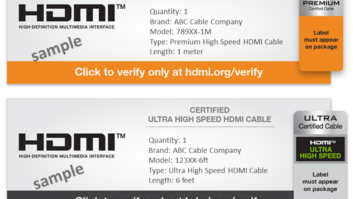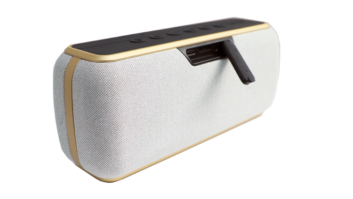AV system installers, integrators and ultimately consumers live with an ever-present and invisible menace to the performance of their electronics: EMI, or electromagnetic interference.
Whether it’s the connection of a cable to a port on a TV, a Wi-Fi home router or even the microwave on a kitchen counter, sources of EMI seem to be a ubiquitous part of everyday modern life.
In this interview, Brad Bramy, vice president of marketing and operations at HDMI® Licensing Administrator, discusses EMI, how cables are tested and things to think about when considering self-terminating HDMI® cables.
Q: Modern homes and offices are awash in RF. Possible sources of electromagnetic interference (EMI) range from Wi-Fi routers and microwaves to Bluetooth speakers and computer monitors. How would you describe the EMI environment in which HDMI cables and devices exist?
Brad Bramy: This is not simply related to HDMI cables, but anywhere that there’s a connection that can act as a source of electromagnetic interference.
Some devices have multiple HDMI ports that may be right next to each other. Especially if active at the same time, they can create a problem for anything else that may be in the area, like Wi-Fi or Bluetooth or other things inside the house, workplace or school.
For cables, it’s very important that they emit very low or no EMI to reduce the possibility of interference with all of the wireless networks, streaming media players, Bluetooth devices, mobile phones and even wireless gaming controllers and headphones.
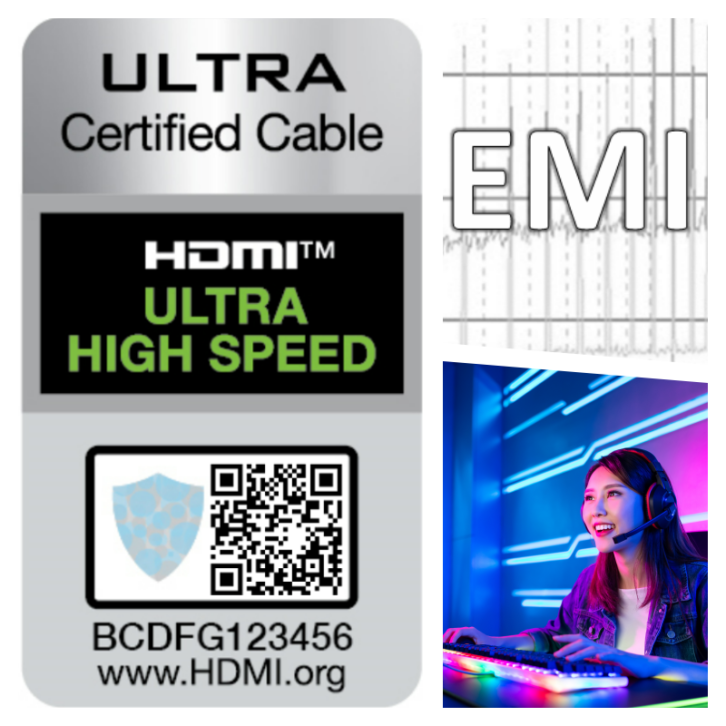 Other devices can also emit EMI, and that can interfere with cables if the cables are poorly made, as they may not have enough shielding.
Other devices can also emit EMI, and that can interfere with cables if the cables are poorly made, as they may not have enough shielding.
EMI tends to happen more where the connectors meet the cables or device, especially where shielding is peeled back to do the soldering.
Then there are design, materials and construction variables, such as the connector, pigtails, shielding and soldering methodology and solder. For example, when a manufacturer constructs a cable or device, if they run low on solder and order some from another supplier who uses a different material, not only can that affect performance, but also EMI.
Q: What is being done to guard against EMI with regards to HDMI tech?
BB: Design, implementation and testing are addressed in the specifications HDMI Founders created when developing the HDMI technology, and they are now a main focus of the HDMI Forum for their current specification development.
Compliance also always matters. One thing is to make sure products are from licensed adopters or that the manufacturer or brand you are buying from is sourced from a licensed adopter, because their products will have gone through certification testing.
There are also two HDMI cables that are tested for EMI specifically. The Premium High Speed HDMI Cable, which has been around for about seven years – that was the first cable specifically tested to make sure it met EMI standards and has become the cable of choice for set-top box and installation manufacturers. They are bundling that cable with their set-top boxes.
Of course, it’s the two-year anniversary of the Ultra High Speed HDMI Cable and its certification. Those cables go farther in their EMI testing because now you’re up to 48Gbps of bandwidth, so EMI could be a bigger problem. Therefore, EMI is a very big focus in the 2.1a specification.
The HDMI Forum has arrangements along with their Forum ATCs [authorized test centers] to use specialized EMI testing labs that have special chambers constructed to meet industry requirements. Most ATCs don’t have their own EMI chambers, but they send out to these authorized EMI labs to do the EMI testing.
What happens as a result is that the Ultra High Speed HDMI Cables exceed the requirements of the latest international EMI standard.
Q: How often are cables tested for EMI and other HDMI spec compliance?
BB: At a minimum, compliance testing must be done anytime there’s a new product. That’s the same for any HDMI product. If you are making something new, it has to get tested at an ATC.
If they make a change in the design or the manufacturing, it has to get certified again, because technically that’s a new product. Even if it doesn’t change, sometimes they will test it again because a reseller wants to see a certificate with just their name on it and know that it was only their cable that was tested.
HDMI LA also audits Premium and Ultra Cables that are already in the market, buying off the shelf or online.
If a cable fails, we contact the HDMI Adopter who then has to fix the problem and get their cables certified again. This process ensures performance and compliance are maintained.
Q: What about field termination? Is there a way for residential systems installers to terminate HDMI cables as needed?
BB: If you field terminate an HDMI cable, that’s not going to be a tested cable. It simply bypasses the whole process we have in place.
Q: You have a special certification labeling program in place to enable consumers and installers to determine whether a Premium or Ultra Cable is authentic. What’s the latest with the program and the response of consumers?
BB: The program gives consumers and integrators the ability to scan a label on the package to ensure it’s authentic. Manufacturers love that it differentiates their products as compliant and certified to the spec.
But there’s still some confusion related to the Ultra Cables. If you look online for cables, people commonly use the term “2.1.” Well, there’s no such thing as a 2.1 cable. You have to use the full name, and that’s an Ultra High Speed HDMI Cable.
So a word to the wise. If someone just kind of uses a number out of context and says “2.1,” it doesn’t always mean it’s compliant to the 2.1a specification. You really have to make sure they state it’s an Ultra High Speed HDMI Cable and that it has a label on it when you get the product.
For more information go to www.hdmi.org.
The terms HDMI, HDMI High-Definition Multimedia Interface, HDMI Trade Dress and the HDMI Logos are trademarks or registered trademarks of HDMI Licensing Administrator, Inc.

